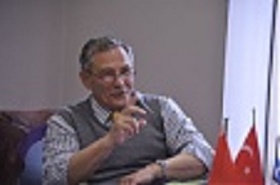Editor's note
International Internet Magazine. Baltic States news & analytics
Wednesday, 17.12.2025, 09:20
Youth in the EU: the European and the Baltic States’ problem
 Print version
Print version |
|---|
There are almost 90 million people in the EU-28 aged 15-29; they represent 17% of the EU’s total population. Although these young people are in very different situations, with education and employment patterns varying considerably among the member states and by age group, the situation is general can be described as alarming.
Moving from education to jobs
This abbreviation is presently widely used in European statistics describing the whole situation with young people’s activity.
The EU’s statistic agency has found that the proportion of young people in NEETs increases considerably with age. The NEET rate, which stood at 6.3% for the age group 15-19 in 2015, almost tripled to 17.3% for the age group 20-24; in the age group from 25 to 29 it is 19.7%, or one in every five people.
Largest share of NEETs in the age group from 20 to 24is in Italy and Greece, lowest is in the Netherlands and Luxembourg.
More than 1 in every 4 young persons aged 20-24 (in 2015 through all EU states) was in NEETS: the highest proportion was in Italy (31.1%) as well as in Greece (26.1%) and more than 1 in every 5 was also in this situation in Croatia (24.2%), Romania (24.1%), Bulgaria (24.0%), Spain and Cyprus (both 22.2%).
In contrast, the lowest NEET rates among young persons aged 20-24 were recorded in the Netherlands (7.2%), Luxembourg.
Same level of “acceptable” NEETs has been registered in the following states: Denmark -8.8%, Germany and Sweden - all 9.3%, Malta and Austria -both 9.8%, as well as the Czech Republic - 10.8%.
At EU-28 level, almost 5 million young persons aged 20-24 (or 17.3%) were in 2015 in NEETs.
Highest increase/drop in NEET
Although the proportion
of young people aged 20-24 neither in NEETs remained relatively stable in the EU-28 as a whole between 2006-15,
important changes occurred over the last decade.
Thus, in 10 EU member
states, the NEET rate has decreased, with the most significant reductions being
registered in Germany (from 15.2% in 2006 to 9.3% in 2015, or -5.9
percentage points – pp), Bulgaria (- 5.3 pp), Sweden (- 3.4 pp),
the Czech Republic (- 2.9 pp) and Poland (- 2.8 pp).
In the other eighteen EU member states, the situation has deteriorated, with the proportion of persons aged 20-24 neither in NEETs increasing notably in Italy (from 21.6% to 31.1%, or +9.5 pp), Greece (+ 9.3 pp), Spain (+ 9.0 pp), Cyprus (+ 8.5 pp), Ireland (+ 7.8 pp), Croatia (+ 5.4 pp), Romania (+ 5.2 pp), Portugal (+ 4.9 pp), the United Kingdom (+ 4.4 pp), Denmark (+ 4.3 pp) and Finland (+ 4.1 pp).
For
example, in Latvia with an average unemployment of over 8%, in some cities the
difference is much greater: from about 5% in the capital and over 15% in Rezekne.
And most of these are young people…
It would be interesting to know whether the Baltic States have a specific strategy towards youth involvement into social activity.











